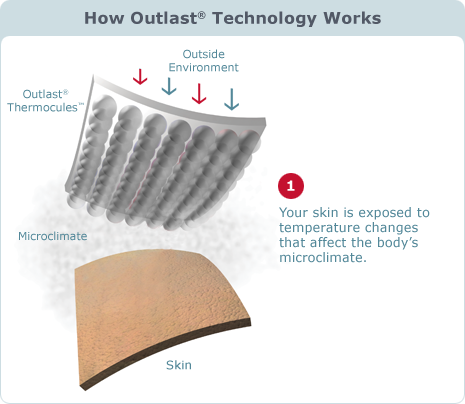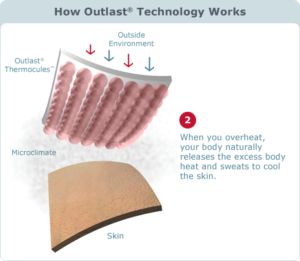Outlast® technology is comparable to ice in a drink; as it changes from solid to liquid, it absorbs heat and cools the drink, keeping that drink at the desired temperature for longer. Outlast® phase change materials work in the same way, but are microencapsulated to be permanently enclosed and protected in a polymer shell. We call microencapsulated phase change materials Thermocules™.

This encapsulation process makes the Thermocules™ exceptionally durable for many applications. These Thermocules™ can be incorporated into fabrics and fibers and have the capacity to absorb, store and release excess heat. This gives any product containing Outlast® technology the ability to continually regulate skin’s microclimate. As the skin gets hot, the heat is absorbed, and as it cools, that heat is released.
Outlast® technology is not wicking technology, which manages moisture by reacting to your sweat and pulling it away from the skin. Outlast® technology will proactively manage heat while controlling the production of moisture before it begins. That’s the Outlast® difference – this can be seen in the following video:
 |
 |
 |
 |
Tested in Space, and Right Here on Earth
Outlast® technology is the only phase change material that carries the Certified Space Technology™ seal of approval. The technology was first developed for use by NASA, and continues to be developed and tested for efficacy and safety, across multiple applications, for major brands around the world. Outlast currently holds over 96 patents related to thermally adaptive materials.




